|
"Pazyryk"
rug, inspired by the historical
Pazyryk rug found in Altai Mountains
Code: PZR01
Size (m): 180x235cm
Size (ft): 6'"x7'8"
Area: 4.23 m2
Density: 170 000 knots per square meter. 135 KPSI
Pile: wool
Warp: wool
Weft: cotton
Hand Woven in Azerbaijan
Dyes: madder (Rubia Tinctorum), weld (Reseda Luteola), indigo / Dyer's
Woad (Isatis Tinctoria), pomegranate skins, walnut husks
Description: Scythian warrior horsemen, elks grazing in a forest green
field, legendary griffins with the head of an eagle and the body of a
lion. |
Contact us for more information about this rug
|
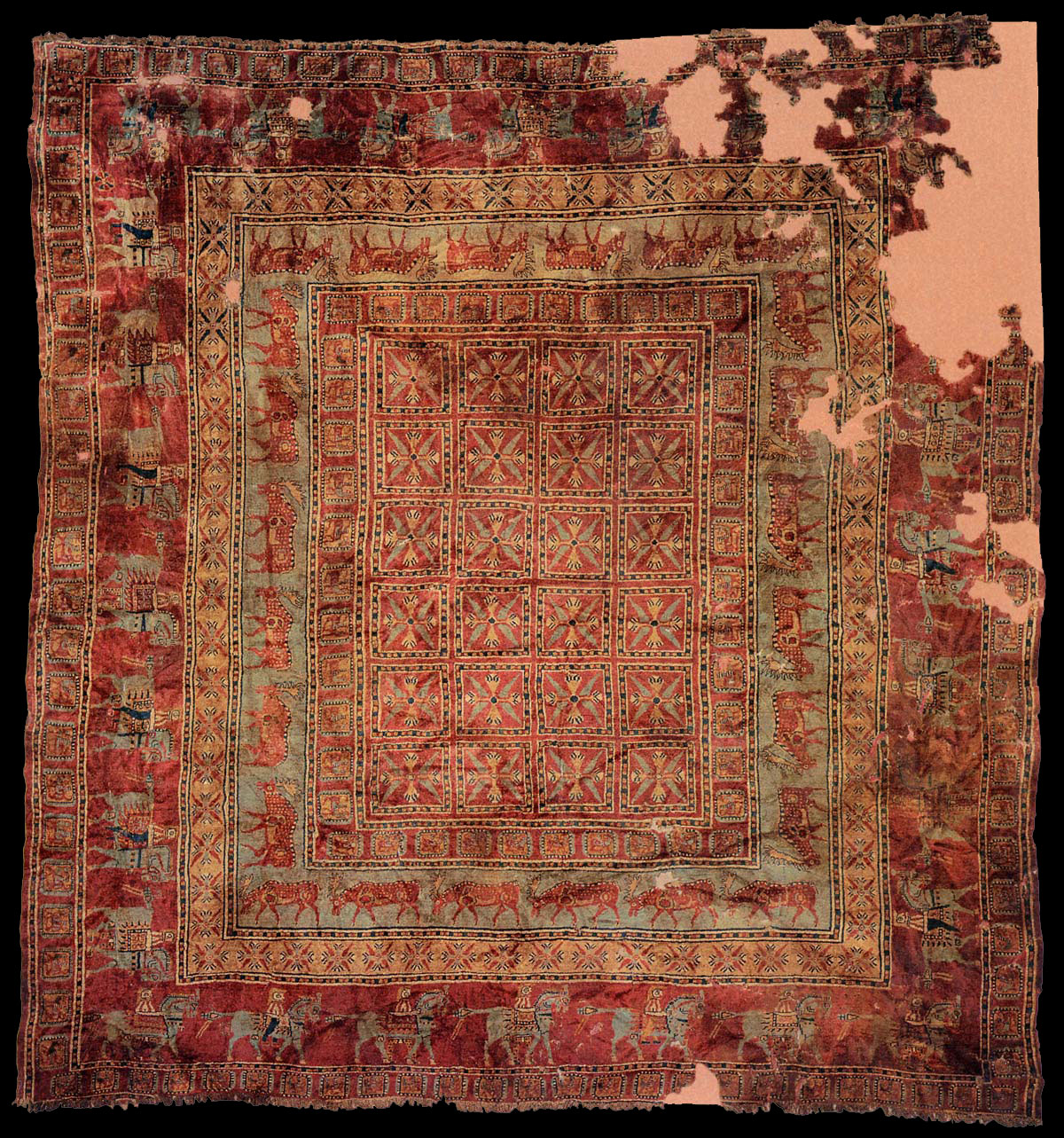
The Pazyryk carpet is
named for the Siberian valley in which it was found, in 1949, near Russia's
borders with Mongolia, Kazakhstan, and China. It is the oldest known knotted
carpet, preserved in a Scythe tomb (kurgan) from the 4th -3th century B.C. |
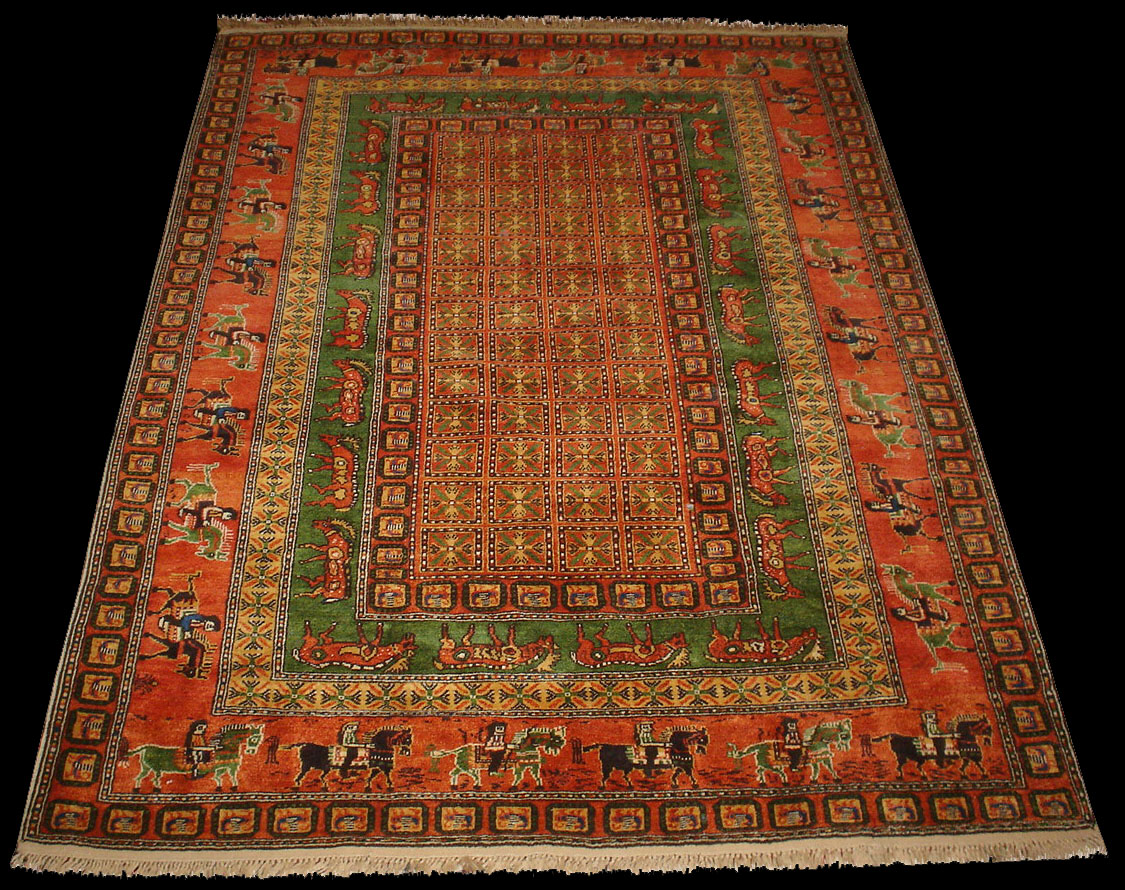

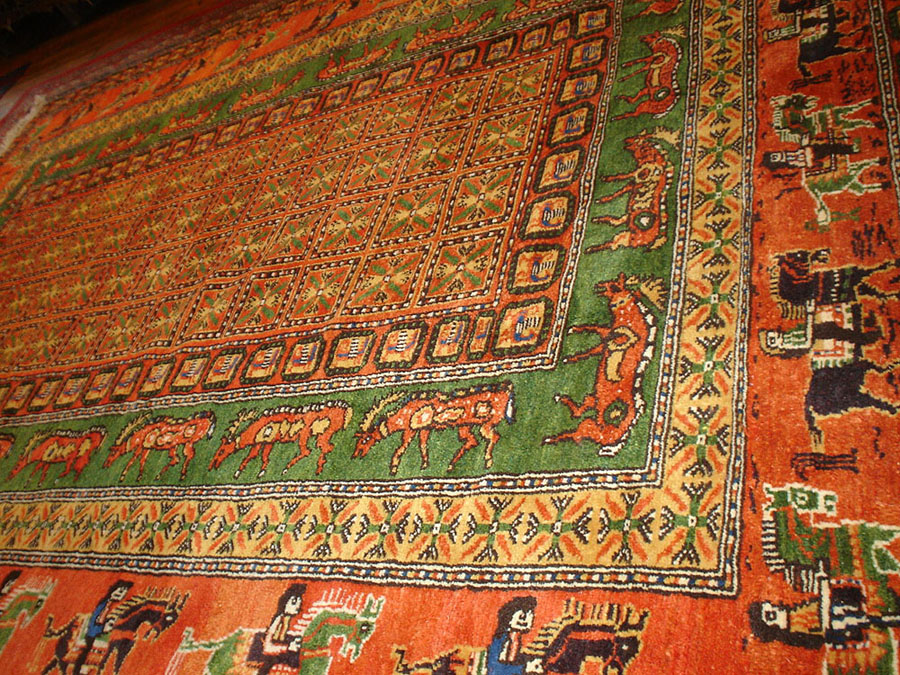
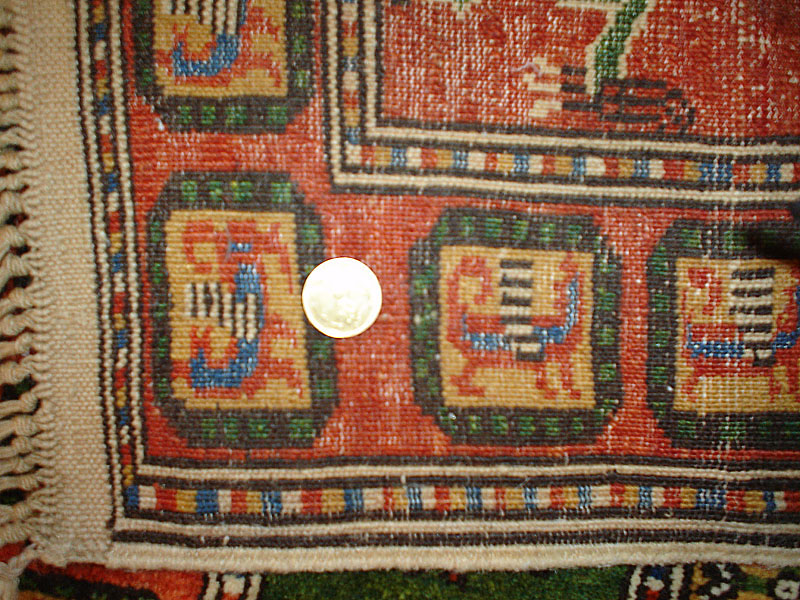
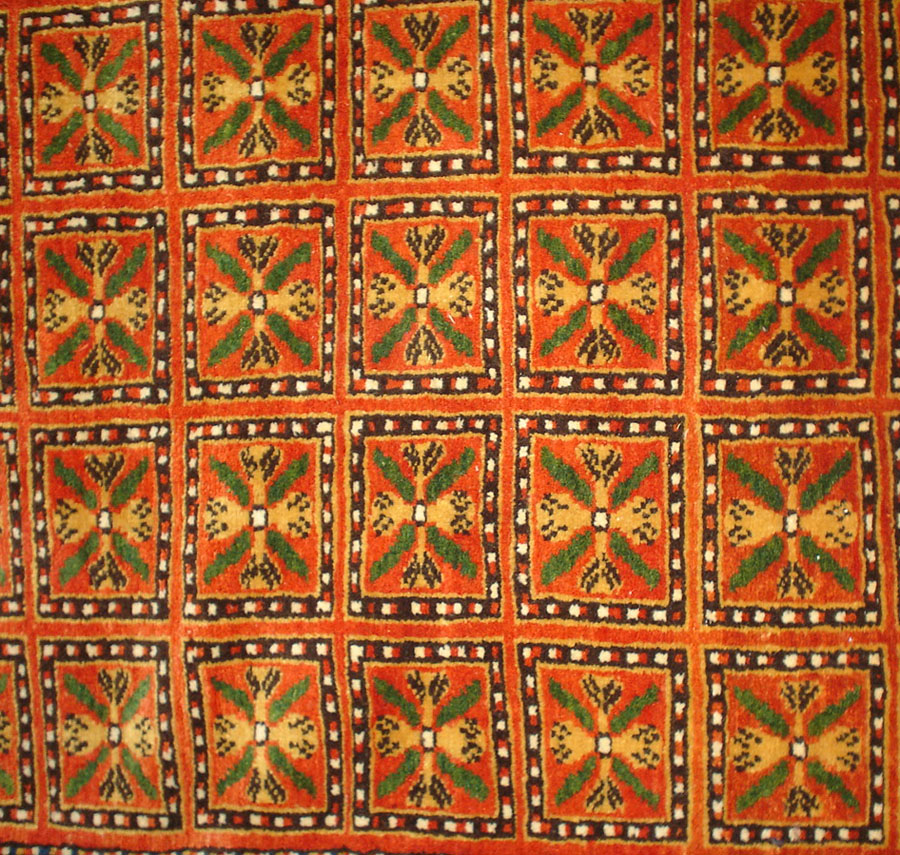
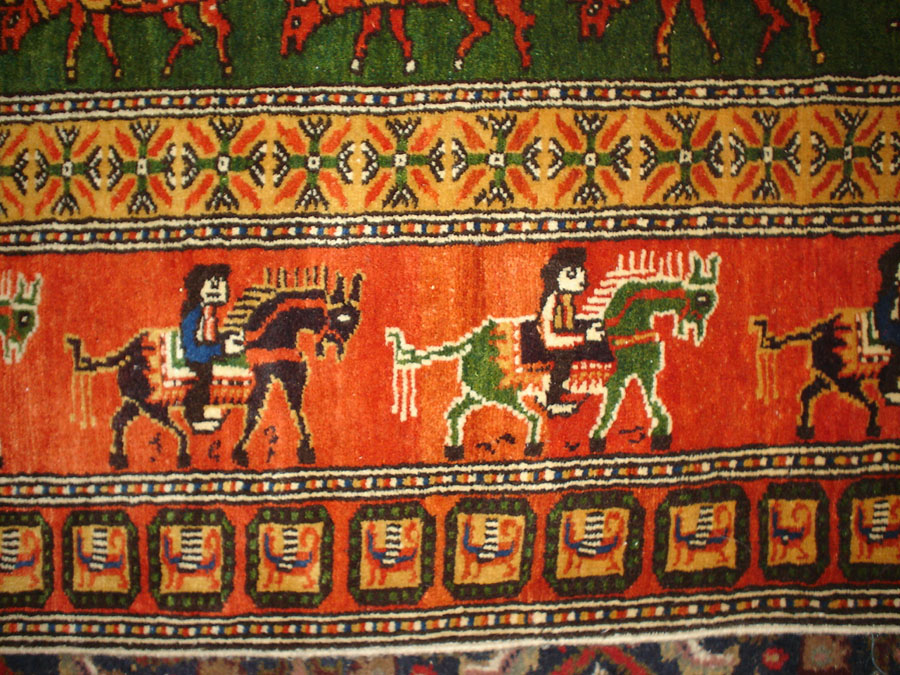
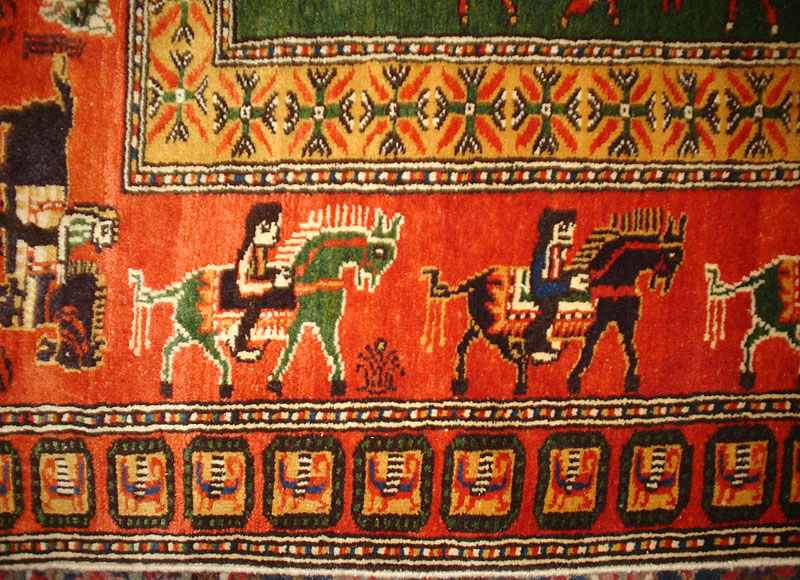
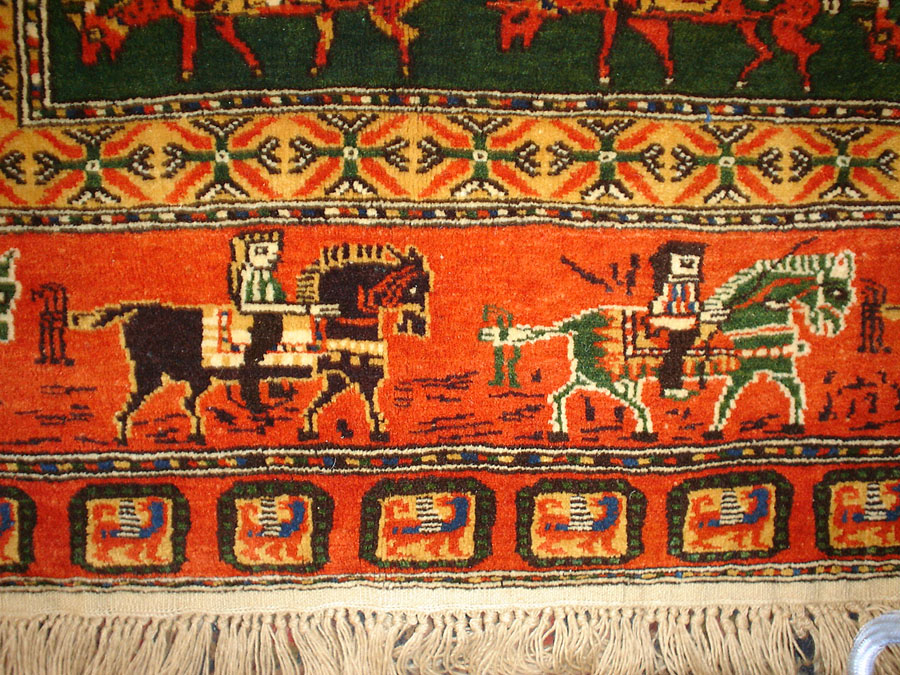
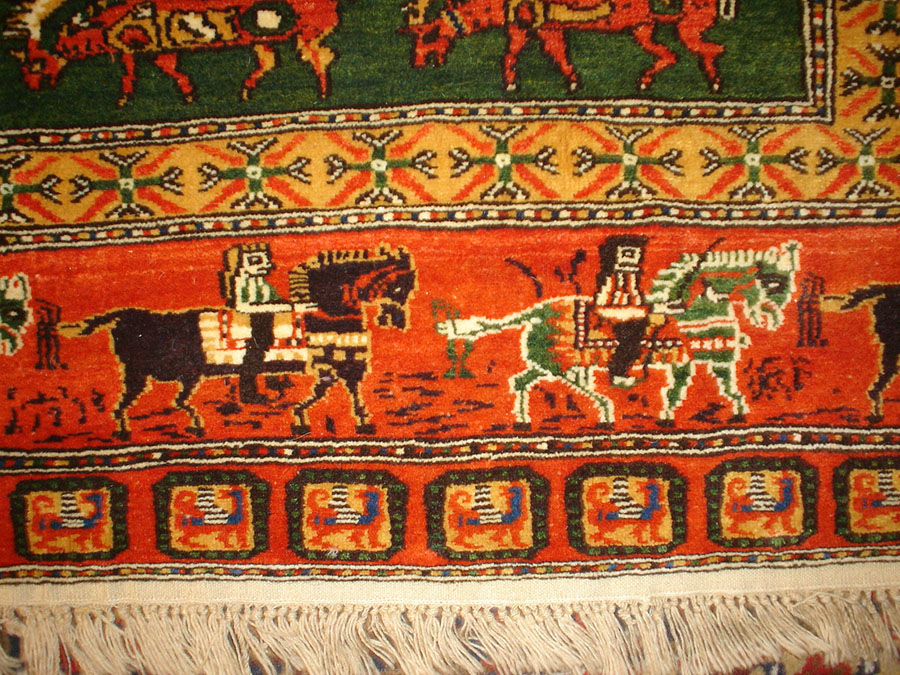
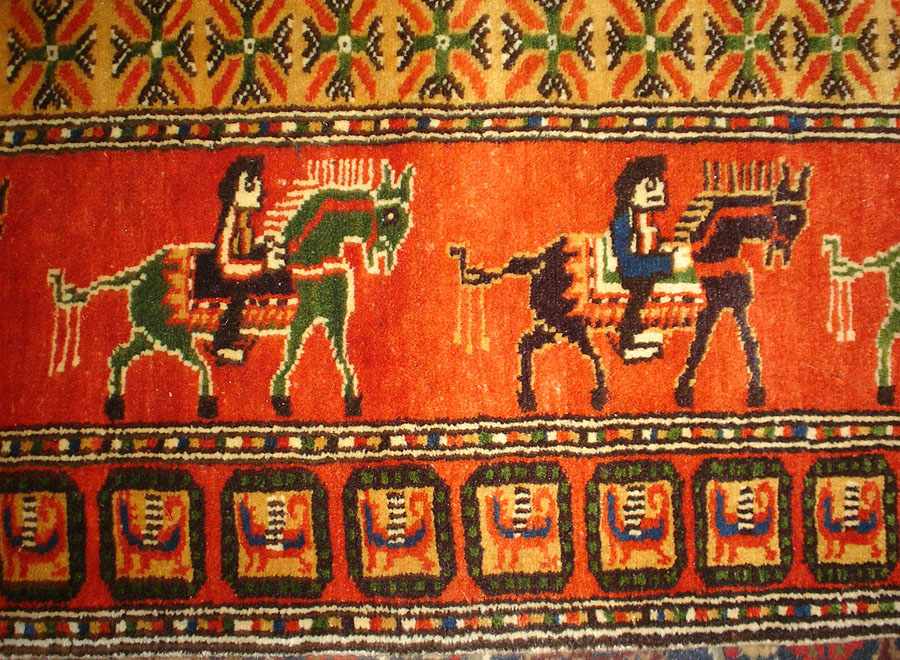
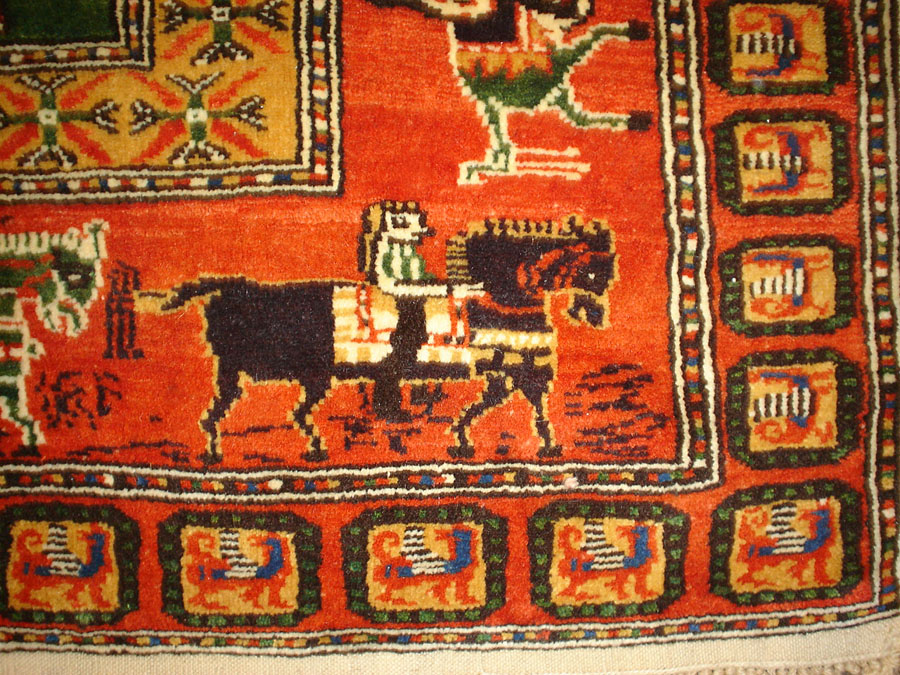
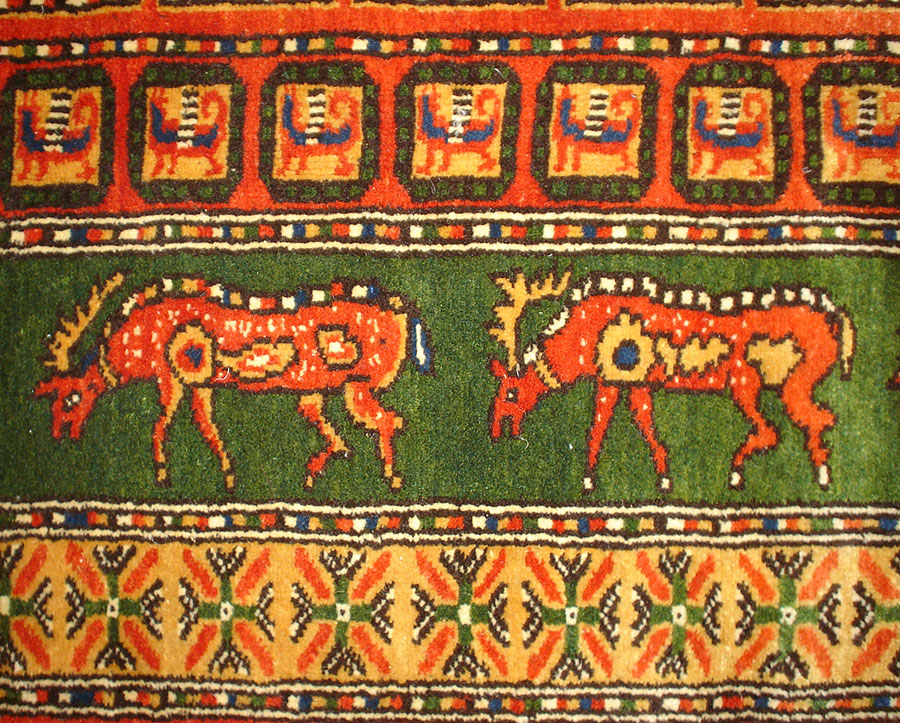


The extra
figures inside the deer are depicting the inwards and the vertebra of the
deer, all parts in real positions with nearly clinical precision (fig.3):
1. The heart, just above the, front legs (a yellow framed red sphere, black
contoured).
2. The aorta (a long red protuberance on the heart).
3. The maw, on the right hand side of the sphere (a large yellow area with a
widening upwards on the end).
4. The intestine, in the rear end (a yellow square surrounded by a light blue
and a yellow bow).
5. Possibly the urethra, on the upper part of the right hind leg (a yellow line
with a black point), better to see on some others deer on the border.
6. The vertebra, directly below the brown back contour (an alternating
black-white chain). |

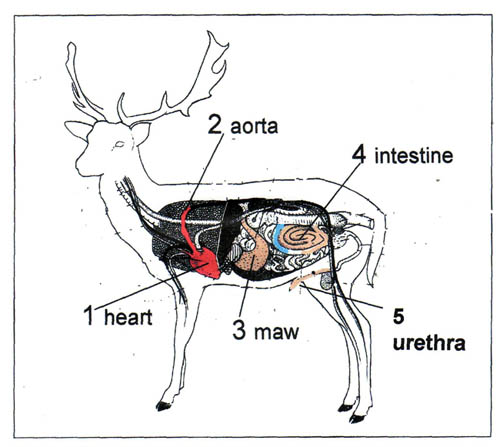
Scythian Golden Artworks

Golden deer from tomb near Filippovka

A Stag of Scythian Gold from the Hungarian National Museum

Shield emblem, Scythian, end of the 7th century B.C. Northern
Caucasus,
Kostromskaia kurgan Gold; 7 1/2 x 12 1/2 in. (31.7 x 19 cm)
The State Hermitage Museum, Saint Petersburg

Scythian Golden Deer from 5th century BC, the best known relic
from the era of the ancient Hungarians, found during in Tápiószentmárton
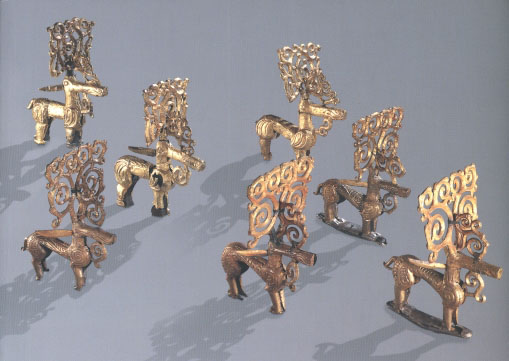
Spectacular works of Scythian Art were excavated between
1986-1990 from burial mounds at Filippovka, Southern Ural

|
For more information about the above rug or to place an order please email
vd@azerbaijanrugs.com (Baku, Azerbaijan) or
ra@azerbaijanrugs.com (San Francisco Bay Area). We will get
back to you within 24 hours or less. |


















